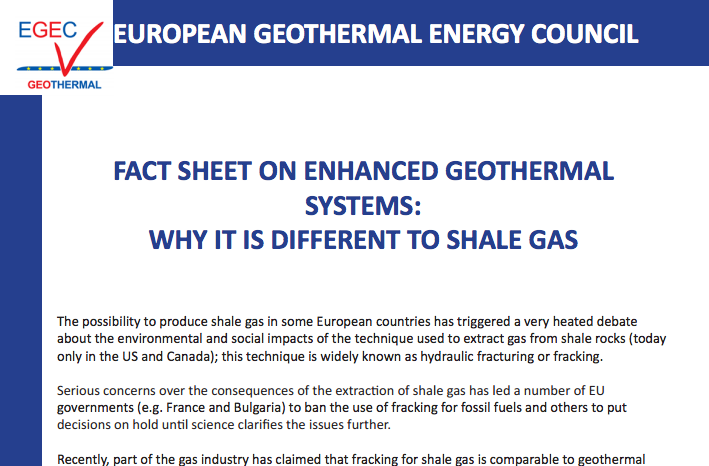EGEC releases factsheet on EGS and the differences to shale gas
The European Geothermal Energy Council (EGEC) releases factsheet outlining the difference between the technique used for shale gas exploitation commonly known as ‘fracking’, and the stimulation technique used for Enhanced Geothermal Systems (EGS).
The European Geothermal Energy Council (EGEC) has just released a factsheet outlining the difference between the technique used for shale gas exploitation commonly known as ‘fracking’, and the stimulation technique used for Enhanced Geothermal Systems (EGS).
This follows a recent European Community Stakeholder conference on unconventional fossil fuels organized in Brussel.
The possibility to produce shale gas in some European countries has triggered a very heated debate about the environmental and social impacts of the technique used to extract gas from shale rocks (today only in the US and Canada); this technique is widely known as hydraulic fracturing or fracking.
Serious concerns over the consequences of the extraction of shale gas has led a number of EU governments (e.g. France and Bulgaria) to ban the use of fracking for fossil fuels and others to put decisions on hold until science clarifies the issues further.
Recently, part of the gas industry has claimed that fracking for shale gas is comparable to geothermal exploration permits is creating a double standard.
Building on the experience of the existing EGS plants in operation, the geothermal sector is able to understand the challenges and provide clear answers to the current debate.
This EGEC factsheet underlines the different impacts of the two systems on both the underground and surface environment. Whilst the two technologies use underground resources to supply energy, shale gas is an extension of classical hydrocarbon technology whilst geothermal is a renewable energy source. Further, there are differences in the way the systems are operated and the resources required.
The factsheet can be found here.
Source: EGEC


















